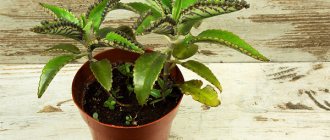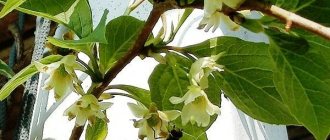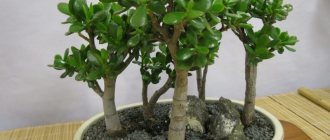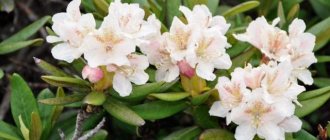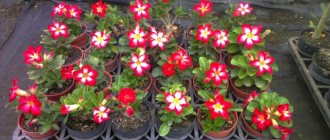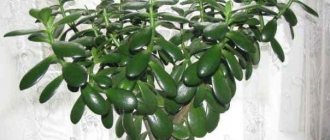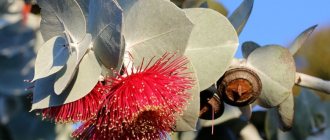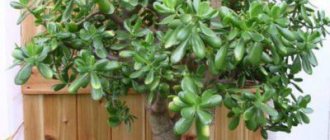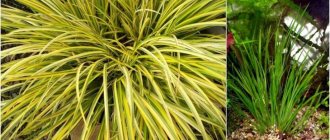Author: Elena N. https://floristics.info/ru/index.php?option=com_contact&view=contact&id=19 Category: Garden plants Published: October 23, 2017Last edits: January 20, 2021
- How to collect
- Medicinal properties
Nettle (lat. Urtica) is a genus of flowering plants in the nettle family, which includes more than fifty species that grow in temperate regions of both hemispheres. In our latitudes, two species are more common than others: stinging nettle (lat. Urtica urens) and stinging nettle (lat. Urtica dioica), or stinging nettle, stinging nettle, stinging nettle. Representatives of both species are valuable food and medicinal raw materials; they are also used for the industrial production of chlorophyll, necessary for the perfume and pharmaceutical industries.
Planting and caring for nettles
- Planting: sowing seeds in open ground before winter. You can sow in early spring, but before spring sowing, the seeds must undergo a month-long cold stratification.
- Lighting: bright sunlight or partial shade.
- Soil: moist, fertile, preferably sandy, cleared of rhizomatous weeds.
- Watering: as needed with rain, well or spring water.
- Feeding: in spring with rotted compost or manure. Nettle does not like mineral fertilizers.
- Reproduction: by seeds and division of rhizomes.
- Pests: urticaria butterflies and their caterpillars.
- Diseases: practically not affected.
- Properties: a medicinal plant rich in vitamins and biologically active elements, the leaves of which have anti-inflammatory, hypoglycemic, hemostatic, wound healing, laxative, expectorant, diuretic, tonic and anticonvulsant effects.
Read more about growing nettles below.
Description of the plant
There are different types of nettles, among them there are dioecious and monoecious representatives. Plant height ranges from 0.5 meters to 2 meters. The edges of the foliage may be jagged or solid. The leaves are located opposite each other.
The stems of the plant can be colored in any shade of green. There are a large number of burning hairs on their surface. Each of them, in fact, is a kind of ampoule with acetylcholine, histamine, serotonin, tartaric, oxalic and formic acids.
When the hairs come into contact with the surface of the human body, the edge of the hair breaks off and gets into the subcutaneous tissue. So the contents of the “ampoule” burn our skin, causing a chemical burn. Substances such as acetylcholine, serotonin and histamine cause severe redness, but oxalic and tartaric acids cause pain. Different types of nettle contain different amounts of these acids. Therefore, the intensity of their effect on the skin is completely different.
Botanical description
Representatives of the genus Nettle are monoecious or dioecious annuals or perennials with opposite, entire, serrated, serrate or three to five dissected leaves at the edges. Both the stems and leaves of nettles are often covered with stinging bristles. The inflorescences of plants are false-spike-shaped, consisting of pistillate or staminate flowers. The fruit of nettle is a compressed, flat nut covered with perianth.
The stinging nettle hair is a large cell whose structure resembles a medical ampoule and contains juice, which contains choline, formic acid and histamine. When you touch a hair, its upper part breaks, penetrates under the skin, and the effect of the juice is felt like a sharp burn in the place where you touched the plant. Usually, nettle stings are harmless, but there are several tropical species, tactile contact with which can even lead to death.
In our country, nettles can be found in vacant lots, near fences, near roads, in vegetable gardens, forest clearings, damp meadows, along the banks of reservoirs, in ravines and ditches. The beneficial properties of stinging nettle have been known since time immemorial, so today this weed can be found both in home gardens, country houses, and on agricultural plots.
- Medicinal garden plants and flowers (part I)
Interesting facts about nettles
There are many legends and interesting facts associated with the culture:
- In some countries, such as England, wine is made from the leaves of the weed.
- The leaves of the plant are used to increase the shelf life of perishable foods.
- The culture is considered a stimulant that increases endurance and performance. Warriors used infusions based on it before battles.
- In the Tula region, a festival is held annually where you can try delicious dishes from the plant and see what different things look like from it.
Growing nettles
The nettle plant grows well on its own, but it still develops better in a specially fertilized and prepared area. Nettles are propagated by seed and vegetative methods (segments of rhizomes). Nettle seeds do not need special pre-sowing treatment, however, stratification for a month at a temperature of 0 to 5 ºC can increase their germination by 20-30%.
The perennial plant stinging nettle prefers areas located in partial shade or sun with well-moistened fertile or sandy soil, cleared of rhizomatous weeds. Sow nettles before winter or early spring: shoots can appear already at a temperature of 8 ºC. Nettle seeds mixed with sand are buried by 1-1.5 cm, row spacing is left 60-70 cm wide. After planting the seeds, the surface is sprinkled with a layer of peat or humus 5 mm thick and before germination (if sowing was done in early spring) the soil on the site keep slightly moist. Shoots will appear in April (with winter sowing) or in May.
If you prefer to propagate nettles vegetatively, dig up its rhizome in the spring, divide it into segments 8-10 cm long and plant them at a distance of 60 cm from each other to a depth of 8 cm. With this method of propagation, nettle budding occurs a month earlier than with seed .
Rules of care
At first, the seedlings look weak and develop very slowly, but after two months the bushes begin to grow intensively: they become branched and lush. Caring for nettles is not difficult; you just need to follow the usual procedures for every gardener: watering, loosening, weeding and fertilizing the soil.
It is better to water nettles with spring, well or rain water heated in the sun.
Nettle is demanding on the nitrogen content in the soil, but it is better not to apply mineral fertilizers to the site. Feed your nettles with rotted compost or manure.
- Shaping lobelia haircut
As for diseases and pests, nettle is resistant to them. She may only have problems with the wren butterfly, the caterpillars of which will have to be collected manually in June. The fact that nettle caterpillars live in clusters makes the work easier; however, when collecting them, do not forget about safety precautions: nettles are very stinging.
Description
Stinging nettle is a perennial weed plant of the nettle family, 70-150 cm high.
The rhizome is long, creeping, branched.
Nettle stems are erect, tetrahedral, branching at the top.
The plant is covered with long, stinging and short simple hairs, which contain formic acid.
The leaves are opposite, petiolate, ovate-lanceolate, coarsely toothed along the edge, with free stipules 8-17 cm long, 2-8 cm wide. Covered with stinging hairs. Each adult plant is armed with approximately ten million stinging hairs.
The flowers are unisexual, small, yellow-green, with a simple, four-parted perianth, collected in spike-shaped hanging inflorescences, spikes emerging from the leaf axils.
The fruit is a small ovoid or elliptical nut of yellowish-gray color.
It blooms in June-September, the seeds ripen in September.
Spreading
Nettle
is distributed throughout the European part of Russia and Siberia.
Stinging nettle is widespread throughout the country. In the Caucasus, Central Asia.
Grows in fertile, moist soils, in shaded areas, ravines, near roads, near farms and housing. In cultivation, stinging nettle is the most promising.
Teberda Nature Reserve. In waste areas and areas where forest materials are harvested. It is especially abundant in areas of former cattle camps, 1300-2500 m above sea level. Everywhere.
Nettle collection and storage
How to collect
Medicinal raw materials are seeds, leaves and rhizomes of nettle. Stinging nettle leaves are collected from June to September, during the flowering period. You can tear them off while wearing gloves, or you can mow the grass, wait until not only the leaves, but also the stems wither, and tear off the foliage with your bare hands. The best time to collect is at dawn on Tuesday during the first quarter of the Moon. In any case, lunar calendars claim that the raw materials collected at this time have special healing powers.
After collecting, the leaves are dried in the shade under a canopy or in the attic, spreading them in a layer 3-5 cm thick on paper or fabric. When dried in the sun, the leaves become discolored and lose some of their medicinal qualities. You can dry nettle leaves in the oven with the door open at 50 ºC. The process is considered complete when the petioles and central veins of the leaves break easily. Sufficiently dried leaves have a dark green color, a faint odor and a bitter taste. The yield of dry raw materials is approximately one fifth of the volume collected. Dry raw materials are sorted, rejecting yellowed, blackened, browned leaves and foreign impurities. Store nettles in paper bags or fabric bags in a dry, well-ventilated place, away from sunlight. Shelf life – 2 years.
Stinging nettle and stinging nettle seeds are collected when they are fully ripe. This usually happens about three weeks after flowering ends, in September. The tops are cut off, dried and threshed.
Stinging nettle rhizomes are dug up in autumn or spring, cleaned of dirt, dried at a temperature of 40 ºC and stored for 3 years under the same conditions as the leaves.
When harvesting nettle roots and rhizomes, the entire plant is destroyed, therefore, when collecting roots, leave 10-15% of the plants on the site untouched for renewal. The next time it will be possible to harvest roots in this area only in three years.
When and where does nettle grow?
The weed grows over large areas of the Southern and Northern Hemispheres, in the tropics, cool forests of North America, Russia, Japan, Europe, and in the wet thickets of Korea, Malaysia, Australia and India. The main places of distribution are forests, parks, plantings and populated areas.
The culture, according to the description, is not afraid of frost and grows with the arrival of the first warm days.
Until mid-summer, the weed can reach its maximum size.
Where does nettle grow in Russia?
On the territory of Russia, nettle is found in the southern regions, the middle zone, and the Caucasus. Grows in the Far East and Altai Territory. Some varieties survive in the harsh conditions of the Urals, Siberia, Sakhalin and Yakutia.
Types and varieties
Medicinal types of nettle include:
- How to get strong petunia seedlings - what can’t you do without in the early stages of seedling development?
- Stinging nettle is a herbaceous perennial with a powerful root and branched horizontal rhizome. This plant reaches a height of 60 to 200 cm. All ground organs of stinging nettle are covered with stinging hairs. The shoots of the plant are elongated, the stems are hollow, ascending or straight. The leaf arrangement is opposite. Equilateral, simple, whole, long-petiolate leaves of stinging nettle are dark green. They reach 17 cm in length and 8 cm in width. The shape of the plate is oblong, ovoid-lanceolate or ovoid-cordate, sometimes elliptical with a deep-cordate base. Axillary panicles consist of small unisexual yellowish flowers, staminate and pistillate. The fruits of stinging nettle are biconvex compressed achenes of yellowish or light brown color. One plant can produce up to 22,000 seeds;
- Stinging nettle is a herbaceous dioecious annual with erect, furrowed, tetrahedral stems from 15 to 35 cm high, pubescent with hard glandular hairs. The leaves of plants of this species are dark green, opposite, serrate, covered with stinging hairs, ovoid or oval, 2 to 6 cm long. Small green axillary flowers, solitary or collected in a spike-shaped inflorescence, can be pistillate or staminate. The fruit of stinging nettle is a multi-seeded capsule or nut.
How nettles bloom
Judging by the description and photo, flowering nettle does not look particularly beautiful, since its flowers are small and unattractive. The color, depending on the variety, can be blue, pink or white. Flowering usually occurs in the second half of June and lasts until September and even October.
According to the description, the inflorescences of the grass are spike-shaped
Properties of nettle - harm and benefit
Medicinal properties
The composition of nettle leaves includes: vitamins A, H, C, E and K, B1, B2, B4, B5, B6, B9, niacin, macroelements chlorine, calcium, potassium, magnesium, phosphorus, sodium, trace elements copper, barium, aluminum , molybdenum, iron, zinc, selenium and manganese. There is 2 times more ascorbic acid in nettle than in lemon, and more vitamin A than in spinach, sea buckthorn, sorrel and carrots. Nettle also contains tannins, phytoncides, chlorophyll, flavonoids and organic acids - gallusic and formic.
Nettle leaves are anti-inflammatory, hypoglycemic and hemostatic. They increase the tone of the uterus, hemoglobin levels and the number of red blood cells in the blood. They are used in the treatment of liver and bladder diseases, pulmonary tuberculosis, anemia, rheumatism, radiculitis and metabolic disorders. The treatment of nettle was effective .
Traditional medicine has recipes for nettle preparations that have wound-healing, laxative, expectorant, diuretic, tonic and anticonvulsant properties. Regular consumption of nettle leaves promotes rapid healing of small ulcers and wounds, and nettle infusion used for compresses, baths and lotions prevents hair loss. People have been using nettle for hair for a long time: 2-3 tablespoons of dry leaves are brewed with a glass of boiling water, left for an hour and filtered.
In addition to the infusion, a nettle decoction is used to improve the condition of hair. How to brew nettles ? Take a tablespoon of dry leaves and crushed dry rhizomes of the plant, add a glass of water, cook for half an hour, then let cool slightly and rub into the scalp. There is no need to rinse off the broth, just pat your hair with a towel.
You can make a wonderful organic fertilizer from nettle, which tomatoes are very fond of: healthy stems with leaves are collected before the seeds appear, they are placed interspersed with the remains of baked goods in a large container, filling it only ¾ full, then pour in water with yeast diluted in it, not exceeding the intended level, and leave in the sun for 3-5 days for fermentation, stirring the composition from time to time. Apply ready-made nettle fertilizer once a week.
And finally, we offer you a recipe for nettle soup. Fry nettle leaves with white onion in a frying pan for 7 minutes in olive oil. Separately, boil the potatoes in salted water until tender, puree them in a blender, keeping the pan over low heat and gradually adding butter, cream and milk to the potatoes. At the end, at low speed, stir the nettle and onion into the puree soup. Serve nettle soup with sour cream or grated Gouda cheese. For one and a half kilograms of potatoes you will need 300 ml of cream, 500 ml of milk, a bunch of nettles, 2 teaspoons of butter. Add salt, pepper, sour cream or grated cheese to taste.
Contraindications
Nettle and its preparations are strictly contraindicated during pregnancy, especially in the last months. It is also harmful to those who suffer from thrombophlebitis.
Nettle or Coleus, houseplant
Gardeners often wonder: which houseplant is similar to nettle? In everyday life you can hear the name “house nettle” instead of “coleus”. This is because coleus leaves are similar to nettles. The shape of the leaf blade in both plants is similar. Coleus foliage has a variety of colors, which cannot be said about nettles, it is only green. When touched, the plant does not sting or irritate the skin.
Coleus is popularly called house nettle.
What does Nettle look like, what family does it belong to?
The houseplant Nettle is a member of the evergreen Lamiaceae genus, and belongs to the Lamiaceae family. The flower is a small bush with several stems. The height of the home plant does not exceed 100 centimeters. The stems are strong with a ribbed structure.
Additional Information! The closest relatives of the indoor nettle flower are mint, basil, and oregano. Unlike its relatives, the flower itself does not smell.
The flowers are small and are of no interest to gardeners. Mostly blue or blue in color.
Coleus house flower during flowering
The main decoration of a flower is its foliage. It amazes the imagination with its shape and color. The leaf blade can be purple, yellow, red, burgundy. Descriptions of the plant say that often the foliage combines all two or even three colors. Each variety has its own unique pattern. These can be stripes, dots, inclusions. The pattern can be either small (barely noticeable) or large (with a clear structure). The edge of the plate is jagged. Leaf length is from 5 to 15 centimeters. The shape can be oval or heart-shaped.
Additional Information! Because of the shape of the leaves, the flower received the popular name “nettle”.
Briefly about the history of appearance
The first mention of the home flower, nettle, can be found in Indian mythology. India is considered the birthplace of nettles. It was in the 19th century that the seeds reached European markets and then spread throughout the world. The first sale was recorded in England. It was very expensive back then. The British were the first to grow the flower at home. In the wild, you can find nettles in the tropical forests of Asia and Africa.
Is it possible to keep it in the house?
There are many myths, legends and superstitions around coleus. Due to the varied colors of the foliage, mystical properties are attributed to the plant. Previously, it was believed that if you keep a flower in the house, it will lead to trouble and misfortune, and will also cause harm to health. If the plant withers and dries up, this means that one of the family members will get sick.
But if a pot of nettles is placed in the office, this will lead to financial growth for the company. If a flower blooms in winter, expect trouble. Some classify him as a muzhegon. It is believed that if a girl has nettles at home, she will never get married and will be lonely until she gets rid of the flower.
For your information! Most horror stories arise from the fact that coleus is often planted on graves. If grown at home, it is believed that it will attract illness and death.
All these signs and superstitions have no scientific proof. It is human nature to attribute our troubles and misfortunes to other people, plants and even objects. If you want to keep a flower in your apartment, then you should not pay attention to signs and superstitions.
Keeping the flower indoors does not have a negative impact on health
Types of nettles
As we already mentioned, there are a large number of plant species in the world. In our article we want to focus only on those species that are characteristic of our country. The most common types of nettles in Russia:
- Stinging nettle (Urtica angustifolia).
- Nettle (Urtica angustifolia).
- Hemp nettle (Urtica cannabina).
- Kyiv nettle (Urtica kioviensis).
- Nettle (Urtica galeopsifolia).
- Light green nettle (Urtica laetevirens).
- Ball nettle (Urtica pilulifera).
- Sonden's nettle (Urtica sondenii).
- Nettle (Urtica platyphylla).
- Stinging nettle (Urtica urens).
Healing properties
Nettle is considered a real storehouse of healing properties. The main ones are the ability to restore blood, choleretic and diuretic effects, restoration of the mucous surface of the gastrointestinal tract, normalization of the menstrual cycle, etc.
In the West, the plant is even used to treat tumors. It has also been proven that nettle relieves cramps and has a good expectorant effect. The grass contains a large amount of chlorophyll, which helps normalize the functioning of the female organs and the entire intestines. Experiments have proven that nettle normalizes hemoglobin levels in the blood and has a positive effect on carbohydrate metabolism.
For a long time, nettle seeds were prescribed to women who could not get pregnant. The plant has even found use as a remedy for impotence. To do this, it is recommended to mix the seeds with banana pulp and use the product daily until libido is restored.
Freshly squeezed juice from the seeds and leaves of nettle helps in the fight against osteomyelitis, and is also used for high levels of salts in the joints. The juice is very effective for treating ulcerative wounds with varicose veins, it heals cuts and diaper rash. The diuretic properties of the plant are used for kidney stones and rheumatism. Nettle oil helps well in the treatment of bruises, arthritis, osteochondrosis and sprains. At home, people often add leaves to vitamin drinks.
Medicinal properties of nettle in gynecology
In gynecology, one of the main properties of nettle is used - it stops bleeding. It is used both to stop uterine bleeding and to relieve heavy menstruation.
Used for vaginitis. The cause of vaginitis is fungi and bacteria, and this is due to insufficient functioning of the endocrine system, poor hygiene and metabolic disorders.
For treatment, not only douching with nettle infusion or decoction will help, but also additional medications intended for this purpose. Here we are talking about a comprehensive solution to the problem.
The appearance of symptoms in women such as insomnia, increased nervousness, headaches and dizziness indicates that they are experiencing menopause. Taking a decoction during this period helps calm the nervous system and normalize the general condition of the body.
